#1920 - Red October
Text
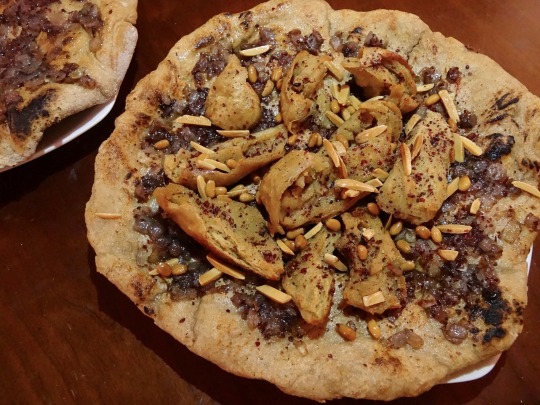

[ID: Two large flatbreads. The one in the center is topped with bright purple onions, faux chicken, fried nuts, and coarse red sumac; the one at the side is topped with onions and sumac. Second image is a close-up. End ID]
مسخن / Musakhkhan (Palestinian flatbread with onions and sumac)
Musakhkhan (مُسَخَّن; also "musakhan" or "moussakhan") is a dish historically made by Palestinian farmers during the olive harvest season of October and November: naturally leavened flatbread is cooked in clay ovens, dipped in plenty of freshly pressed olive oil, and then covered with oily, richly caramelized onions fragrant with sumac. Modern versions of the dish add spiced, boiled and baked chicken along with toasted or fried pine nuts and almonds. It is eaten with the hands, and sometimes served alongside a soup made from the stock produced by boiling the chicken. The name of the dish literally means "heated," from سَخَّنَ "sakhkhana" "to heat" + the participle prefix مُـ "mu".
I have provided instructions for including 'chicken,' but I don't think the dish suffers from its lack: the rich, slightly sour fermented wheat bread, the deep sweetness of the caramelised onions, and the true, clean, bright expressions of olive oil and sumac make this dish a must-try even in its original, plainer form.
Musakhkhan is often considered to be the national dish of Palestine. Like foods such as za'tar, hummus, tahina, and frika, it is significant for its historical and emotional associations, and for the way it links people, place, identity, and memory; it is also understood to be symbolic of a deeply rooted connection to the land, and thus of liberation struggle. The dish is liberally covered with the fruit of Palestinian lands in the form of onions, olive oil, and sumac (the dried and ground berries of a wild-growing bush).
The symbolic resonance of olive oil may be imputed to its history in the area. In historical Palestine (before the British Mandate period), agriculture and income from agricultural exports made up the bulk of the economy. Under مُشَاعْ (mushā', "common"; also transliterated "musha'a") systems of land tenure, communally owned plots of land were divided into parcels which were rotated between members of large kinship groups (rather than one parcel belonging to a private owner and their descendants into perpetuity). Olive trees were grown over much of the land, including on terraced hills, and their oil was used for culinary purposes and to make soap; excess was exported. In the early 1920s, Palestinian farmers produced 5,000 tons of olive oil a year, making an average of 342,000 PL (Palestinian pounds, equivalent to pounds sterling) from exports to Egypt alone.
During the British Mandate period (from 1917 to 1948, when Britain was given the administration of Palestine by the League of Nations after World War 1), acres of densely populated and cultivated land were expropriated from Palestinians through legal strongarming of and direct violence against, including killing of, فَلّاَحين (fallahin, peasants; singular "فَلَّاح" "fallah") by British troops. This continued a campaign of dispossession that had begun in the late 19th century.
By 1941, an estimated 119,000 peasants had been dispossessed of land (30% of all Palestinian families involved in agriculture); many of them had moved to other areas, while those who stayed were largely destitute. The agriculturally rich Nablus area (north of Jerusalem), for example, was largely empty by 1934: Haaretz reported that it was "no longer the town of gold [i.e., oranges], neither is it the town of trade [i.e., olive oil]. Nablus rather has become the town of empty houses, of darkness and of misery". Farmers led rebellions against this expropriation in 1929, 1933, and 1936-9, which were brutually repressed by the British military.
Despite the number of farmers who had been displaced from their land by European Jewish private owners and cooperatives (which owned 24.5% of all cultivated land in Palestine by 1941), the amount of olives produced by Palestinians increased from 34,000 tons in 1931 to 78,300 in 1945, evidencing an investment in and expansion of agriculture by indigenous inhabitants. Thus it does not seem likely that vast swathes of land were "waste land," or that the musha' system did not allow for "development"!
Imprecations against the musha' system were nevertheless used as justification to force Palestinians from their land. After various Zionist organizations and militant groups succeeded in pushing Britain out of Palestine in 1948—clearing the way for hundreds of thousands of Palestinians to be dispossessed or killed during the Nakba—the Israeli parliament began constructing a framework to render their expropriation of land legal; the Cultivation of Waste Lands Law of 1949, for example, allowed the requisition of uncultivated land, while the Absentees’ Property Law of 1950 allowed the state to requisition the land of people it had forced from their homes.
Israel profited from its dispossession of millions of dunums of land; 40,000 dunums of vineyards, 100,000 dunums of citrus groves, and 95% of the olive groves in the new state were stolen from Palestinians during this period, and the agricultural subsidies bolstered by these properties were used to lure new settlers in with promises of large incomes.
It also profited from the resulting "de-development" of the Palestinian economy, of which the decline in trade of olive oil furnishes a striking example. Palestinian olive farmers were unable to compete with the cheaper oils (olive and other types) with which Zionist, capital-driven industry flooded the market; by 1936, the 342,000 PL in olive oil exports of the early 1920s had fallen to 52,091 PL, and thereafter to nothing. While selling to a Palestinian captive market, Israel was also exporting the fruits of confiscated Palestinian land to Europe and elsewhere; in 1949, olives produced on stolen land were Israel's third-largest export. As of 2014, 12.9% of the olives exported to Europe were grown in the occupied West Bank alone.
This process of de-development and profiteering accelerated after Israel's military seizure of the West Bank and Gaza in 1967. In 1970, agriculture made up 34% of the GDP of the West Bank, and 31% of that of Gaza; in 2000, it was 16% and 18%, respectively. Many of those out of work due to expropriated or newly unworkable land were hired as day laborers on Israeli farms.
Meanwhile, Palestinians (and Israeli Palestinians) continued to plant and cultivate olives. The fact that Palestinians do not control their own water supplies or borders and may expect at any time to be barred by the military from harvesting their fields has discouraged investment and led to risk aversion (especially since the outmoding of the musha' system, which had minimized individual risk). In this environment, olive trees are attractive because they are low-input. They can subsist on rainwater (Israel monopolizes and poisons much of the region's water, and heavily taxes imports of materials that could be used to build irrigation systems), and don't require high-quality soil or daily weeding. Olive trees, unlike factories and agricultural technology, don't need large inputs of capital that stand to be wasted if the Israeli military destroys them.
Olive trees are therefore the chosen crop when proving a continued use of land in order to prevent the Israeli military from expropriating it under various "waste" or "absentee" land laws. Palestinians immediately plant olive seedlings on land they have been temporarily forced from, since even land that has lain fallow due to status as a military closed zone can be appropriated with this justification. The danger is so pressing that Palestinian agronomists encouraged this habit (as of 1993), despite the fact that Israeli competition and continual planting had lowered olive crop prices, and despite the decline in soil quality that results from never allowing land to lie fallow. In more recent years, olive trees have yielded primary or supplementary income for about 100,000 Palestinian families, producing up to 191 million USD in value in good years (including an average of 17,000 tons of olive oil yearly between 2001 and 2009).
Israeli soldiers and settlers have famously uprooted, vandalized, razed, and burned millions of these olive trees, as well as using military outposts to deny Palestinian farmers access to their olive crops. It prefers to restrict Palestinians to annual crops, such as vegetables and grains, and eliminate competition in permanent crops, such as fruit trees.
This targeting of olive trees increases during times of intensified conflict. During the currently ongoing olive harvest season (November 2023), Gazan olive farmers have reported being targeted by Israeli war planes; some farmers in the West Bank have given up on harvesting their trees altogether, due to threats issued by organized networks of settlers that they would kill anyone seen making the attempt.
The rootedness of olive trees in the history of Palestine gives them weight as a symbol of homeland, culture, and the fight for liberation. Palestinian olive harvest festivals, typically celebrated in October with singing, dancing, and eating, have inspired similar events elsewhere in the world, aimed at sharing Palestinian food and culture and expressing solidarity with those living under occupation.
Support Palestinian resistance by calling Elbit System’s (Israel’s primary weapons manufacturer) landlord, donating to Palestine Action’s bail fund, and donating to the Bay Area Anti-Repression Committee bail fund.
Ingredients:
For the dish:
2 pieces taboon bread, preferably freshly baked
2 large or 3 medium yellow onions (480g)
1 cup first cold press extra virgin olive oil (زيت زيتون البكر الممتاز)
1 Tbsp coarsely ground Levantine sumac (سماق شامي / sumaq shami), plus more to top
Ground black pepper
For the chicken (optional):
500g chicken substitute
5 green cardamom pods, or 1/4 tsp ground cardamom
4 cloves, or pinch ground cloves
1 Mediterranean bay leaf
1 Tbsp ground sumac
For the nut topping (optional):
2 Tbsp slivered almonds
2 Tbsp pine nuts
Neutral oil, for frying

Notes on ingredients:
Use the best olive oil that you can. You will want oil that has some opacity to it or some deposits in it. I used Aleppo brand olive oil (7 USD a liter at my local halal grocery).

If you want to replace the taboon bread with something less laborious, I would recommend something that mimics the rich, fermented flavor of the traditional, whole-wheat, naturally leavened bread. Many people today make taboon bread with white flour and commercial yeast—which you might mimic by using storebought naan or lavash, for example—but I think the slight sourness of the flatbread is a beautiful counterpoint to the brightness of the sumac and the sweetness of the caramelized onions. I would go with a sourdough pizza crust or something similar.
Your sumac should be coarsely ground, not finely powdered; and a deep, rich red, not pinkish in color (like the pile on the right, not the one on the left).

For this dish, a whole chicken is usually first boiled (perhaps with spices including bay leaves, cardamom, and cloves) and then baked, sometimes along with some of the oil from frying the onions. I call for just frying or baking instead; in my opinion, boiling often has a negative effect on the texture of meat substitutes.
Instructions:
For the onions:
1. Heat a cup of olive oil in a large skillet or pot. Fry onions on medium-low, stirring often, for 10 minutes or until translucent.

2. Add 1 Tbsp sumac and a few cracks of black pepper and reduce to low. Cook for another 30 minutes, stirring occasionally, until onions are sweet, reduced in volume, and pinkish in color.

For the chicken:
1. Briefly toast and finely grind spices except for sumac (cardamom, cloves, and bay leaf). Filter with a fine mesh sieve. Dip 'chicken' into the pot in which you fried the onions to coat it with olive oil, then rub spices (including sumac) onto the surface.

2. Sear chicken in a dry skillet until browned on all sides; or bake, uncovered, in the top third of an oven heated to 400 °F (200 °C) until browned.
For the nut topping:
1. Heat a neutral oil on medium in a small pot or skillet. Add almonds and fry for 2 minutes, until just starting to take on color. Add pine nuts and fry until both almonds and pine nuts are golden brown. Remove with a slotted spoon.
To assemble:
1. Dip each flatbread in the olive oil used to fry the onions, then spread onions over the surface.
Some cooks dip the bread entirely into oil; others press it lightly into the surface of the oil in the pot on both sides, or one side; a more modern method calls for mixing the olive oil with chicken broth to lighten it. Consult your taste. I think the bread from my taboon recipe stands up well to being pressed into the oil on both sides without tearing or becoming soggy.
2. Top flatbread with chicken and several large pinches more sumac. Bake briefly in the oven (still heated to 400 °F / 200 °C), or broil on low, for 3-5 minutes, until the sumac and the surface of the bread have darkened a shade.
3. Top with fried nuts.
Musakhkhan is usually eaten by ripping the chicken into bite-sized pieces, tearing off a bit of bread, and eating the chicken using the bread.
Some cooks make a layered musakhkhan, adding two to three pieces of bread covered with onions on top of each other before topping the entire construction with chicken and pine nuts.
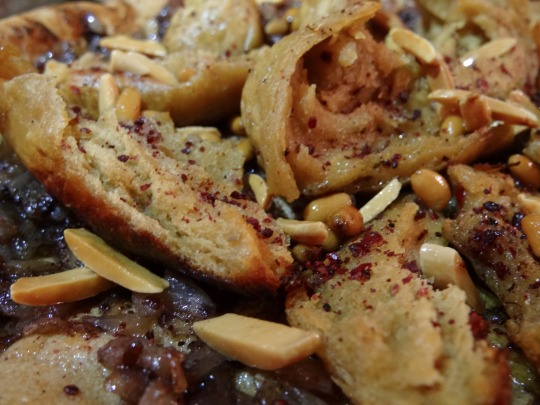
668 notes
·
View notes
Text
MAUREEN O'HARA: A WOMAN OF BEAUTY, STRENGTH, & DIGNITY
In Memory of The Queen of Technicolor
youtube
In loving memory of one of Ireland's greatest gifts to cinema, The O'Hara Collection is devoted to the films and collective works of actress, Maureen O'Hara. The goal of this blog is to showcase her wonderful spirit and shed light on her glorious career as one of the Golden Age's finest. Later dubbed The Queen of Technicolor, O'Hara not only dressed her films with her fiery red hair and brilliant green eyes, but she also had a talent for acting that even rivaled her beauty. There will never be another like her.
Maureen O'Hara was born August 17th, 1920. She passed October 24th, 2015. She was 95 years old.
Interviews and commentary sampled from the following featurettes:
-A Tribute to Maureen O'Hara with Hayley Mills, Juliet Mills, and Ally Sheedy
-The Making of The Quiet Man (hosted by Leonard Maltin)
-The Making of Rio Grande (written and hosted by Leonard Maltin)
Song: Maggie's Theme from The Parent Trap Soundtrack
Films Used In Order of Appearance:
Lisbon (1956) w/ Ray Milland
Jamaica Inn (1939) w/ Charles Laughton
The Hunchback of Notre Dame (1939) w/ Charles Laughton
How Green Was My Valley (1941) w/ Walter Pidgeon
Against All Flags (1952) w/ Errol Flynn
The Black Swan (1942) w/ Tyrone Power
Spencer's Mountain (1963) w/ Henry Fonda
Our Man in Havana (1959) w/ Alec Guinness
Mr. Hobbs Takes A Vacation (1962) w/ Jimmy (James) Stewart
The Parent Trap (1961) w/ Hayley Mills
The Quiet Man (1952) w/ John Wayne
The Rare Breed (1966) w/ Juliet Mills
McLintock! (1963) w/ John Wayne
Rio Grande (1950) w/ John Wayne
The Wings of Eagles (1957) w/ John Wayne
Only the Lonely (1991) w/ Ally Sheedy & John Candy
#old hollywood#vintage#maureen o'hara#ireland#john wayne#errol flynn#the parent trap#the quiet man#ally sheedy#hayley mills#juliet mills#harry carey jr.#brian keith#jimmy stewart#Youtube#video#vid recs
60 notes
·
View notes
Text
Adolf Hitler
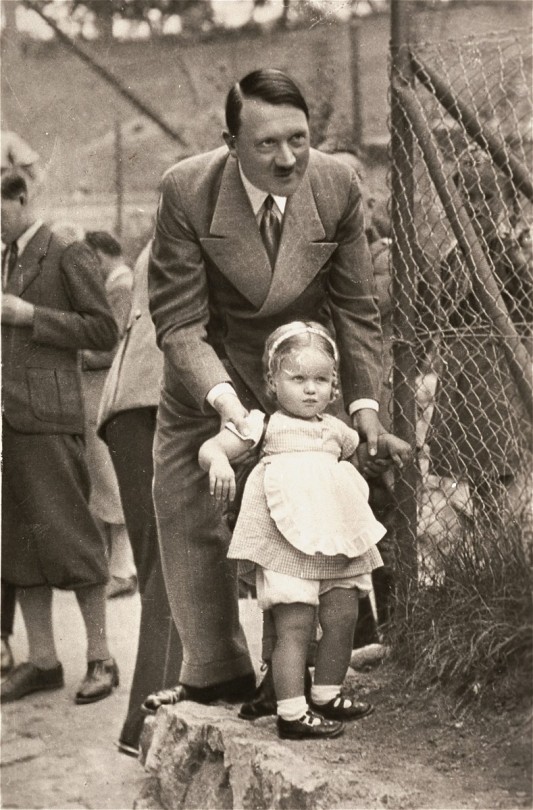
These are some facts and curiosities about Adolf Hitler:
He was born Braunau am Inn on 20 April 1889
On 16 August 1914, when the German Empire had already entered the First World War, Hitler enlisted as a volunteer at the age of 25 in the Bavarian army of Kaiser Wilhelm II, being assigned to the 1st Company of the 16th "List" Infantry Regiment, belonging to the 6th Reserve Division.
On 15 October 1918 he was subsequently temporarily poisoned by a mustard gas attack, which left him blind for three days. He was immediately admitted to Pasewalk Military Hospital where, according to some sources, he learned the news of the German defeat on November 9th.
While still in the army he was tasked with spying, on behalf of the army and the police, on the meetings of a small nationalist party, the German Workers' Party (DAP). During the session held by the political group at the Sterneckerbräu, a beer hall in center of the city, that same evening, Hitler had a violent argument with another customer.
Fascinated by his speech, Anton Drexler, the founder and secretary of the party, signed him up, without even consulting him
Hitler was not discharged from the army until 1920, after which he began to take part full-time in party activities.
He soon became its leader and changed its name to the National Socialist German Workers' Party.
A key element of Hitler's appeal to the German people was his constant appeal to national pride, wounded by defeat in war and humiliated by the Treaty of Versailles, imposed on the German Empire by the victorious states.
Hitler's success was based on conquering the middle class, hit hard by the inflation of the 1920s and the unemployment brought about by the Depression. Peasants and war veterans made up other groups that supported the Nazis.
On January 30, 1933, Hitler was sworn in as Chancellor in the Reichstag chamber, under the gaze and applause of thousands of Nazi supporters.
Using the pretext of the Reichstag fire, Hitler issued the "Reichstag fire decree" on 28 February 1933, less than a month after taking office. The decree suppressed most of the civil rights guaranteed by the 1919 constitution of the Weimar Republic in the name of national security
It is rumored that he had an incestuous relationship with his niece, Geli Raubal.
His photo was put in the Times.
When Hindenburg died on 2 August 1934, Hitler (who as already head of government, Reich Chancellor) could not also become Reich President (head of State), created a new position for himself, that of Führer which allowed him to combine the two tasks.
To demonstrate German power to the world, Hitler (on Goebbels' idea) hosted the 11th Olympiad in Berlin, with a triumphal opening ceremony. On 25 October of the same year, a treaty of friendship between the Kingdom of Italy and Germany was signed in Berlin.
Hitler personally directed the war operations, exercising a decisive influence in strategic choices and operational management.
Responsible for the death of millions of people, Hitler was the proponent of a nationalist and racist ideology, as well as a policy of discrimination and extermination that affected various ethnic, political and social groups: Slavic populations, Romani ethnic groups, Jehovah's Witnesses, homosexuals, opponents politicians, prisoners of war, the physically and mentally disabled and, especially, the Jews.
Having remained stranded with the troops loyal to him in a Berlin now surrounded by the Red Army, he committed suicide in his bunker on 30 April 1945 together with his partner Eva Braun, whom he had married the day before.
He was nominated for the Nobel Peace Prize in 1939.
Sources:
Wikipedia: Adolf Hitler
Military Wiki: Adolf Hitler
I DON'T SUPPORT NAZISM,FASCISM OR ZIONISM IN ANY WAY, THIS IS JUST AN EDUCATIONAL POST
63 notes
·
View notes
Note
Feel free to ignore this, but... I've been thinking... Does Ramshackle even have, like, running water/electricity when Yuu moves in? It's been abandoned for so long, and Crowley doesn't seem the type to pay for services for a place no one is using. And if there is water/electricity, maybe it's in such a poorly maintained state that Yuu would probably be safer showering under a thunderstorm.
So now imagine Yuu going to Vargas and asking if she can use the gym showers when no one is there. Next thing she knows, her teachers are giving her a key to an empty staff room in the castle with its own shower and a small kitchenette, horrified at the thought that Crowley allowed a magicless girl to not only be alone in a place anyone can break into, but also without even water to wash herself or electricity to cook.
Frankly I have to agree with you. The building hasn't had living in inhabitants for the better part of a century. If it's still connected to anything, I doubt any of it would run properly. Like those pipes have to be rusted in need of replacement, you cant tell me the water in Ramshackle didn't run red from rust on the rare occasions it did work. Same with electricity, if it was ever connected to begin with. If it's anything like our world in that regard, electricity being widespread in most homes only started to be a thing in the mid 1920s. So 50/50 bet on whether or not Ramshackle had power to begin with or Yuu had to live by candlelight for a while.
It isn't until book 3 that Ramshackle looks clean and livable. Book 4 takes place over winter break, so its in December, and I think they say Book 2 is in September. So this is somewhere in October or November. Things are going to get cold and dark very fast, the problem of the living conditions at Ramshackle are getting real. Knowing Crowley, he probably put off the maintenance work until the reality is staring him in the face and all the staff are breathing down his neck to get shit fixed. So I'm pretty sure Miss Yuu has to live like this for a few months. Because Ramshackle has to have running water and electricity if all these students are going to be living there for the training. If it wasn't all at least up and running, I don't think Ramshackle would a viable option. But since Yuus motivation for agreeing to the training camp was to get money to fix the house, I don't think Crowley got the best work done. Ramshackle at that point is livable, but it still sucks. There's some loose floorboards, there's a draft in the living room, the kitchen ceiling has a leak. It does just enough to keep the rain (mostly) out.
Even if it was GN or guy Yuu, they would have to use the gym showers and maybe ask the teachers for help, because until then Ramshackle can barely be slept in. I want to have faith in the other staff that they would help Miss Yuu in any way they can. Like Vargas let's her know when the locker room is free and makes sure no one goes in until she's done. It's Treins idea to let her have access to the staff quarters and use the spare room. Especially when Crowley finally gets the work done and there is repair guys in and out of the building, she has a room to crash in for a couple weeks till it's done.
827 notes
·
View notes
Text
THIS DAY IN GAY HISTORY
based on: The White Crane Institute's 'Gay Wisdom', Gay Birthdays, Gay For Today, Famous GLBT, glbt-Gay Encylopedia, Today in Gay History, Wikipedia, and more … January 19


1863 – Ogden Codman, Jr. was an American architect and interior decorator in the Beaux-Arts styles, and co-author with Edith Wharton of The Decoration of Houses (1897).
Codman spent his youth from 1875 to 1884 at Dinard, an American resort colony in France, and on returning to America in 1884, studied at the MIT. Wharton became one of his first Newport clients for her home there, Land's End. Subsequently she introduced Codman to Cornelius Vanderbilt II, who hired him to design the second and third floor rooms of his Newport summer home, The Breakers.
In 1907, Codman built the Codman-Davis House in Washington, D.C. for his cousin Martha Codman, one of the few intact homes that he designed. This included a carriage house, now the Apex Night Club, ironically a gay club.
Although a noted homosexual, on 8 October, 1904, Codman married one of his commissioners, Leila Griswold Webb, widow of railroad magnate H. Walter Webb, who died unexpectedly in 1910.
In 1920, Codman left New York to return to France, where he spent the rest of his life at the Château de Grégy, wintering at Villa Leopolda in Villefranche-sur-Mer: it is his masterpiece, the fullest surviving expression of his esthetic.

1897 – The Missouri Supreme Court upholds a conviction for assault to commit sodomy of a St. Louis police officer who attempted sodomy with another male after threatening to arrest him unless he accompanied him to a lumber yard, where the attempt was made.

1900 – An Ohio newspaper reports that a man was arrested for sex with his 13-year-old male companion. Both claim that the younger partner's mother "gave" him to the other.


Ray Stevens & Pat Paterson (R)
1941 – Born: Pierre Clermont, better known by his ring name Pat Patterson, was a Canadian former professional wrestler (d.2020). Pat was 17 when he started wrestling. He soon became one of the biggest names in the sixties and seventies. He worked for WWE as a creative consultant. He was inducted into the WWE Hall of Fame in 1996.
Outside of the wrestling ring, Pat was really timid and shy. He was soft-spoken, with a cute French accent. Surprisingly, Pat was a former altar boy and candidate for the priesthood. He was a deeply religious man.
Pat Patterson debuted in Montreal, Quebec in 1958 as "Pretty Boy" Pat Patterson, an effeminate wrestler who wore red lipstick and pink trunks and was accompanied by his pet Poodle.

A Young Pat Patterson
Patterson wrestled frequently for affiliates of the National Wrestling Alliance throughout the 1960s, and was a ten time tag team champion in San Francisco with a variety of partners. His most famous pairing was with Ray Stevens, the two of them forming the heel tag team, the Blond Bombers.
Patterson was openly gay, although he had never stated so. It is rumored that Pat and Gerald Brisco, another of his wrestling partners, were lovers. In 1992, Patterson was accused of sexual harassment by former ring announcer Murray Hodgson and released from the company until the charges were dropped, when he was promptly rehired. After dropping the charges, Hodgson's attorney referred to Hodgson as "a lifelong con man."
In August 2006, Patterson underwent emergency heart surgery. In October, Patterson recovered from his operation and was released from the hospital.
On June 12, 2014, Patterson officially "came out" on TV. The video link is below:
youtube
Although Patterson was openly gay, having come out in the 1970s, his sexual orientation was never directly acknowledged on television until 2014 when he spoke about it on a WWE-produced reality TV show.
Louie Dondero, Patterson's longtime partner of 40 years, died of a heart attack in 1998. Patterson himself died in December 2020.


1950 – Randy Price is a television newscaster with WCVB-TV in Boston, Massachusetts, after being the lead anchor at WHDH-TV from 1998 to 2009. He is considered the U.S.'s first openly gay newscaster.
Born in Baton Rouge, Louisiana, Price attended Louisiana State University, where he began his broadcasting career in college radio, which continued with a stint in the U.S. Air Force, with Price working for the Armed Forces Radio and Television Service.
He worked in television in Bakersfield, California (KERO-TV) and Toledo, Ohio (WTVG), before moving to Boston's WBZ-TV in 1983 where he anchored for 12 years. He left WBZ in 1995 due to alcohol problems which included a drunk driving conviction.
Price joined WHDH-TV in 1996 as a freelance reporter, and in 1997 was made a full-time anchor. He moved into the morning anchor chair and then was promoted to anchor the 5, 6 and 11 p.m. newscasts. On February 6, 2009, Price was let go from WHDH-TV. His last newscast was on Wednesday, February 4, 2009. On February 7, 2009 The Boston Globe quoted Price that station owner, Edmund Ansin, had told him "we need to move in different directions."
On June 2, 2009, Price was named morning anchor at WCVB-TV, Channel 5 in Boston.
Price is openly gay and on January 3, 2007 he married longtime partner Mark Steffen in a ceremony on the steps of the Massachusetts State House in Boston, Massachusetts. They live in Kittery, Maine.


The Johns Committee in session
1959 – On this date investigators summoned the University of Florida Geography professor Sigmund Diettrich to the Manor Motel in Gainesville, Florida for "interviewing". Soon after, he was fired from his job and lost the life he loved as a beloved teacher and dean. He attempted suicide the same day he was let go from U.F. Hundreds of other professors and students across the state were also terminated or expelled because of their sexuality. Many people are familiar with the McCarthy hearings but do not realize that Florida had its own committee designed to weed out communism and homosexual activity. State Senator Charley Johns started the investigations to "protect Florida's children."
The Johns Committee pursued people in academic institutions, courthouse bathrooms and bus stations. The committee's investigators went so far as tapping phones in motels, interrogating children as young as 10, and breaking up a teenage girl's slumber party looking for evidence of moral misconduct. In 1993 more than 30,000 pages of secret documents became public, including a University of Florida administrator's statement that there was no way to prevent Gay men from lingering in university bathrooms "unless you pour sulfuric acid on the floor to make people go fast."


1982 – Pete Buttigieg is an American politician and candidate for the Democratic nomination in the 2020 United States presidential election. He is the first openly gay person to seek the Democratic nomination, and has built his campaign around the idea of generational change. He launched his campaign on April 14, 2019, after forming an exploratory committee in January. Initially considered a long shot, he gained significant momentum in mid-2019 when he participated in several town halls, forums, and debates. As of December 2019, several media outlets consider him one of four "top-tier candidates".
Buttigieg served as the 32nd mayor of South Bend, Indiana from January 2012 to January 2020. Before running for office, he worked on the political campaigns of Democrats Jill Long Thompson, Joe Donnelly, and John Kerry. He was defeated in the 2010 election for Indiana State Treasurer before being elected mayor of South Bend, Indiana the following year, becoming the youngest mayor of a city with a population of over 100,000. In 2015, Buttigieg publicly came out as gay. Later that year, he was reelected with over 80% of the vote. In 2017, he ran for chair of the Democratic National Committee.
From 2009 to 2017, he served as a naval intelligence officer in the United States Navy Reserve, attaining the rank of lieutenant. In 2014, he was deployed to Afghanistan for seven months and was awarded the Joint Service Commendation Medal and the Joint Meritorious Unit Award. From 2007 to 2010, he worked as a consultant at management consulting firm McKinsey & Company. Buttigieg is a graduate of Harvard College and Oxford University. He attended the latter on a Rhodes Scholarship.
In a June 2015 piece in the South Bend Tribune, Buttigieg came out as gay. By coming out, Buttigieg became Indiana's first openly gay elected executive. He was the first elected official in Indiana to come out while in office, and the highest elected official in Indiana to come out. Buttigieg is also the first openly gay Democratic presidential candidate, and the second overall, after Republican Fred Karger, who ran in 2012.
In December 2017, Buttigieg announced his engagement to Chasten Glezman, a junior high school teacher. They had been dating since August 2015 after meeting on the dating app Hinge. They were married on June 16, 2018, in a private ceremony at the Episcopalian Cathedral of St. James. As of April 2019 Chasten uses his husband's surname, Buttigieg.
Buttigieg announced that he and his husband had become parents on August 17, 2021. Buttigieg announced that they had adopted two newborn fraternal twins on September 4, 2021.
In June 2019, to mark the 50th anniversary of the Stonewall riots, a watershed moment in the LGBTQ rights movement, Queerty named him one of its "Pride50" people identified as "trailblazing individuals who actively ensure society remains moving towards equality, acceptance and dignity for all queer people."
President-elect Biden named Buttigieg as his nominee for Secretary of Transportation in December 2020. His nomination was confirmed on February 2, 2021, by a vote of 86–13, making him the first openly gay Cabinet secretary in U.S. history. Nominated at age 38, he is also the youngest Cabinet member in the Biden administration and the youngest person ever to serve as Secretary of Transportation.


2004 – Ian Iqbal Rashid releases his movie Touch of Pink. Multi-talented Rashid is a poet, screenwriter and filmmaker known in particular for his volumes of poetry, for the BBC TV series This Life and the feature films Touch of Pink and How She Move.
Of Indian ancestry and Ismaili Muslim religion, Rashid's family lived in colonial East Africa for generations. Ian was born in Dar es Salaam, Tanzania. Different years of birth are given for Rashid in different sources, but academic work gives the year as 1968. In 1970, his family was forced to leave Tanzania. After failing to secure asylum in the UK and US, they settled in Toronto.
Rashid began his career as an arts journalist and critic and events programmer, particularly focussed on South Asian diasporic, Muslim and LGBTQ cultural work.
In the early 1990s, Rashid returned to London, Britain, where he lives today with his partner, the writer, curator, and academic Peter Ride.
In the late 1980s, Rashid was a regular contributor to the Canadian LGBT magazine Rites. Rashid published his first poetry collection, Black Markets, White Boyfriends and Other Acts of Elision, in 1991. Two more followed: the chapbook Song of Sabu in 1993 and The Heat Yesterday in 1995.
His poems "Another Country", "Could Have Danced All Night", "Hot Property" and "Early Dinner, Weekend Away" appear in John Barton and Billeh Nickerson's 2007 anthology Seminal: The Anthology of Canada's Gay Male Poets, and others were included in the 2009 anthology Forbidden Sex, Forbidden Texts: New India's Gay Poets.
Self-taught as a film-maker, in 1991, Rashid made the short film Bolo Bolo! with Kaspar Saxena. The film, part of an HIV/AIDS cable access series called Toronto Living With AIDS, resulted in the series being pulled from Rogers Television after complaints about sexually suggestive content, though it had a long and healthy life at film festivals.
Rashid went on to write two award-winning short films, Surviving Sabu (1999), and Stag (2001).
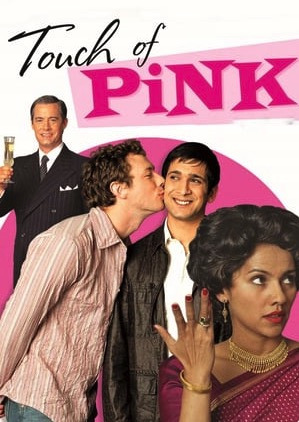
Touch of Pink, Rashid's first feature film, spent 12 years in development. In 2003, he finally had the chance to direct the project as a Canada-UK co-production. It premiered at the 2004 Sundance Film Festival to great acclaim, a bidding war, and eventually, a sale to Sony Picture Classics. The film has attracted extensive scholarly commentary.
How She Move received a similar reception at Sundance Film Festival. Directed by Rashid in 2007, the film is set in the world of step dancing. It was nominated for a Sundance World Cinema Grand Jury Prize and purchased by Paramount Vantage. The film opened to positive reviews and strong box office.
Rashid began working as a writer in UK television in the late 1990s. His credits include the soap London Bridge (Carlton Television for ITV) and the cult hit BBC2 series This Life, for which he received the Writer's Guild of England award.



27 notes
·
View notes
Text
Lots of Torchwood reveals today!
First, we have Torchwood Soho: Ascension's cover.

Then, we have descriptions for the upcoming monthlies.
In July, Art Decadence
London in the 1920s and Sir Reggie works for Torchwood, saving the world from alien invasions. Really, he relies on the services of his loyal butler while he paints the town red.
But there’s a new sensation in high society – What is the secret of The Serpentine Club and can Forster save his master from it?
We have a new era of Torchwood, the 1920s! If it's half as good as Soho, I'm in!
In August, End Game featuring Tosh
You have been brought to Secure Control Room B to respond to a simulated emergency.
You will be able to issue orders and make real time decisions in a disaster scenario.
Welcome to the end of the world. Shall we begin?
In September, The Hollow Choir
There’s always been something in the caves. Over the years people have gone in and not come out. But that was a long time ago. They’ve been sealed for the best part of a century.
Eight hours ago, something changed. Three students somehow found their way in. Now time’s running out to rescue them. Their one hope is a man called Rhys Williams. Because somehow, he has a map.
In October, Widdershins
One night long ago, Iain tried to raise the Devil. He walked the wrong way round an ancient stone in the village graveyard. He didn’t think anything would happen, not really.
But something did. Something far worse than the Devil came to Llandyth.
And now, many years later, Iain’s trying to work out what really happened that night. Did Torchwood ruin his life?
#torchwood#andy davidson#gideon lyme#lizbeth hayhoe#norton folgate#toshiko sato#rhys williams#torchwood soho: ascension#art decadence#end game#the hollow choir#widdershins#big finish#rift alert
10 notes
·
View notes
Text
Ein Heldenleben (A Hero's Life) is an expanded version of Manfred von Richthofen's memoir Der Rote Kampfflieger (The Red Baron). In addition to the autobiography, it includes letters from Manfred to his family (like the 1933 edition) and some chapters that were not included in the book, as well as other comments and anecdotes from people who were close to him. It also includes accounts by his brother Lothar von Richthofen.
Overview:
Visit to the Great Headquarters
My Engagement
A flight in an observation balloon
A day at Staffel 11 (by Lothar von Richthofen)
At Jagdgeschwader Richthofen (by a Dutch reporter)
Richthofen as leader and comrade (by Leutnant Friedrich Wilhelm Lübbert, Jasta 11)
In memory of Richthofen (by v. B.)
An encounter (by Emil August Glogau)
The mother about the boy Manfred
Letter by Leutnant Hans Joachim Wolff to Leutnant Lothar Freiherr von Richthofen
How Richthofen shot down his seventy fifth victory (by Leutnant Lampel)
Richthofen (by Erich von Salzmann):
Part 1
Part 2
Part 3
At court for the second time
Letters of Erwin Böhme: Before the war, Erwin Böhme worked as an engineer in East Africa. When the war started he was already 37 years old. This did not stop him and he became a successful fighter pilot, being personally selected by Boelcke to join his fighter squadron. In 1916 he met the daughter of a former business colleague and they fell in love. The following letters are those Böhme wrote to his later fiancée Annamarie during the war days.
[Translated are the parts of the letters where Böhme describes his life as a fighter pilot.]
Landres, 24 June 1916
Kowel, 7 July 1916
Kowel, 3 August 1916
Kowel, 15 August 1916
Bertincourt, 11 September 1916
Bertincourt, 21 September 1916
Somme, 4 October 1916
Somme, 18 October 1916
Lagnicourt, 31 October 1916
Lagnicourt, 12 November 1916
Jagdstaffel Boelcke, 12 December 1916
Partenkirchen, 28 January 1917
Jagdstaffel Boelcke, 8 April 1917
Valenciennes, 25 April 1917
Valenciennes, 9 May 1917
Valenciennes, 3 July 1917
Jagdstaffel 29, 16 July 1917
Jagdstaffel 29, 7 August 1917
Jagdstaffel 29, 17 August 1917
18 August 1917
Jagdstaffel Boelcke, 21 September 1917
“With the aces”, 20 October 1917
Rumbeke, 31 October 1917
Back with the aces again, 31 October 1917
4 November 1917, Sunday morning
Jagdstaffel Boelcke, 14 November 1917
Bavikhove, 16 November 1917
Bavikhove, 19 November 1917
27 November 1917
The End
Rudolf Berthold – a man who never let himself be dissuaded from his convictions. A man who, despite the worst injuries always returned to the front as quickly as possible. A man for whom the war was not over, even if it was over for his country. A summary of Bertholds life can be found in the pinned post over @subtile-jagden
The following are translated diary entries as well as some of his letters.
Before mobilization
It is getting serious!
First challenges
Emergency landing
Important reconnaissance flights during the advance
The most beautiful day of my life!
Finally a pilot!
Buddecke, the dear comrade!
Feldfliegerabteilung 23
End of 1915
Single seater fighter unit Vaux and the first victories
An unfortunate day for Berthold
Back to the unit
Jasta 4, the Pour le mérite and a new challenge
Beginning of 1917
Finally off to Flanders
End of 1918: Ceasefire and revolution
1919 / 1920: Uncertainties, Soldier´s Councils and the Last Fight
Ernst Jünger was a passionate diarist. During his time in the First World War, he filled 14 diaries. Based on these entries, he wrote his popular book Storms of Steel. The diary entries provide additional information, funny stories and reveal his true feelings during this turbulent time.
First experiences
Officer Candidate and Relocation
First Cannonade
First wound
Back at the front
Days at the front and stories from old friends
Quéant
Friendly contact with the enemy
New year, same situtation
A love affair
Officer training course
Back in the trenches and dangerous patrols
Mine warfare and gas attacks
An English prisoner and a funeral
Summer 1916
Battle of the Somme Part 1
A short break from fighting and another injuriy
Wartime conditions
Another injury
30 notes
·
View notes
Photo
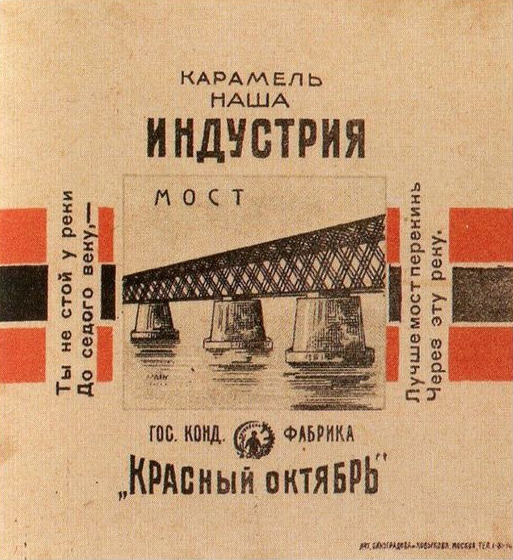


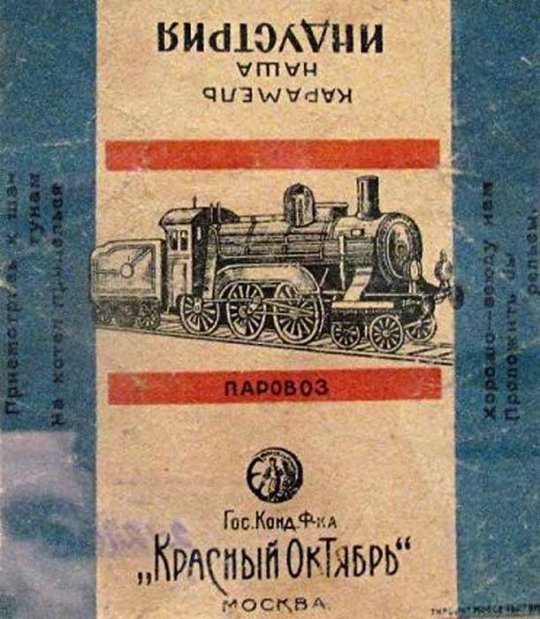




Packaging of Our Industry hard candy made at the Red October factory (USSR, 1920s). Wrappers showcase bridges, trains, tools etc.
180 notes
·
View notes
Text



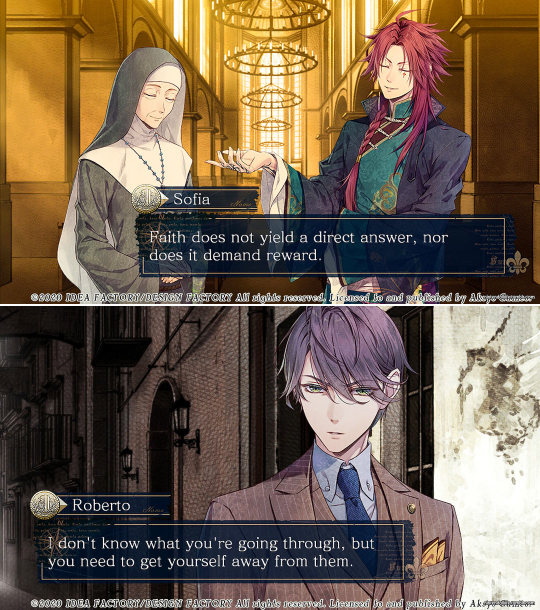

I completed Piofiore: Fated Memories on Nintendo Switch about a month ago. Piofiore is a popular otome visual novel about mafia in 1920's Italy. The promise of a mature story paired with beautiful art style enticed me to buy the game. I was also curious to find out why the otome fandom calls a certain love interest in the game a "trashbando".
The protagonist Liliana "Lili" Adornato is an upstanding young woman raised by church and she gets tangled in the world of organized crime. Most of the love interests in the game represent three competing mafia families: Falzone, Visconti and Lao Shu. The mafia setting lends a natural frame for mature themes that include violence, human trafficking, torture and sexual assault.


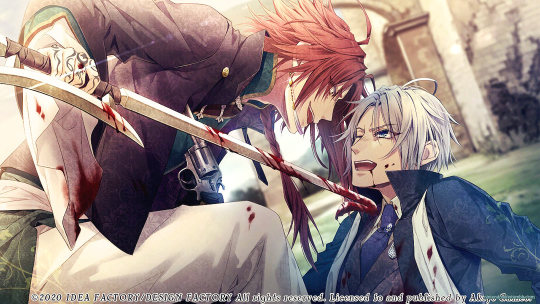
Each love interest has a bad ending, good ending and best ending. In addition to this they all have a short after story. Yang's route was easily my favorite - lots of action and fun events. Orlok's bad ending was memorable with its brutality - poor guy.
Some of the routes weren't super interesting. Dante's route had the ingredients to grab my attention but the execution wasn't the best. I ended up slightly disappointed with the overall story not completely revealing a certain key factor of the plot. Maybe the rest of the "mystery" is reserved for the sequel, Piofiore: Episodio 1926?
I could have done with less romance and more story even though Piofiore apparently isn't that loaded with romance fluff.
I found it interesting how a character could appear wildly different on a different route. Some may claim this is inconsistent writing but I find it logical to incorporate different points of view to characters' personality and have them act differently according to their motives in different situations. Being a loving and caring person towards someone doesn't mean they couldn't have a sadistic tendency towards people who oppose them.

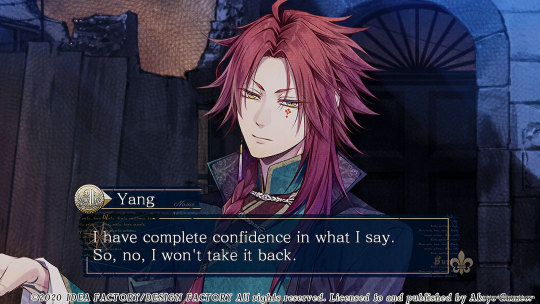
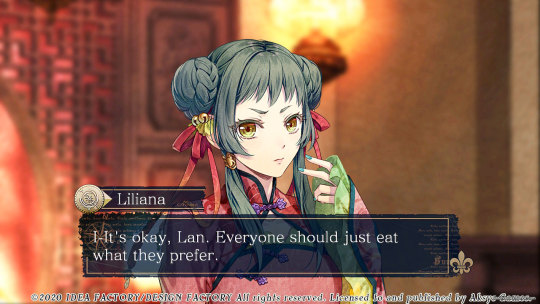
What comes to favorite characters, at first glance I thought Gilbert would be my top pick - manly man with a badass eye patch. Gilbert had his moments with some funny light-hearted scenes and his gentlemanly ways. Especially the way he spoke to Dante made me chuckle: "Yo Dante! What's with the face? You sick or something?".
But I ended up liking Yang the most. Yang was such a peculiar character and his attitude and dialogue made me laugh. I guess I'm part of the trashbando-loving "Yang gang" now.
My husband pointed out that it's usually the bald 50+ year-olds or the red-haired ones that strike my fancy and that was true in this case too.
The various side characters were a good addition to the cast.
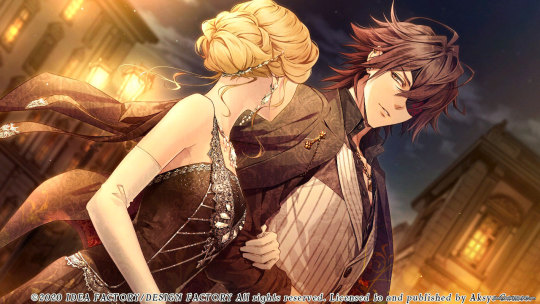

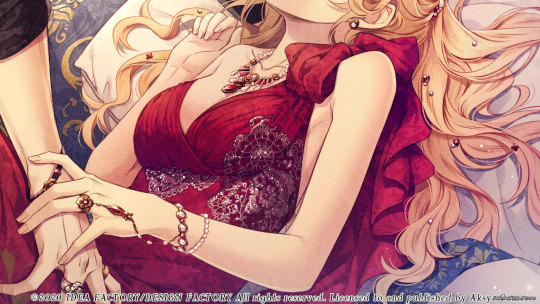
There's a good amount of high quality CG images to unlock in the game. I was especially impressed with the intricate details in clothing and jewelry. A common occurrence was me commenting "oo wow, look at those amazing details in the dress" during a scene where the protagonist and a love interest kiss.

The game's user interface is pure eye candy. The usual quality of life features like skipping previously read content, dialogue history, quick save/load and chapter select are present.
The music was pretty good too. Voice acting was top notch but I was unhappy the protagonist wasn't voiced (and her portrait wasn't shown during her dialogue).
I recall a few typos and grammar mistakes in the game but overall I'd say the localization was done well.
My top complaint is that there was an absurd amount of dialogue about food but they hardly ever showed it in pictures. All kinds of delicious dishes and desserts kept being mentioned but I think they showed food only twice. Show me the food, dammit!
Oh, and Nicola's fashion sense irked me. His outfit was so classy and then he had to accessorize with a tie that looks like it was barfed on.

Finishing all the routes and unlocking all content in the game took me 55 hours. I started playing in February and finally finished in October. I'm not the fastest reader and I have a chronic case of falling asleep when I try to play in bed in the evenings.
I liked the game but at some points I felt like the story was dragging. I didn't enjoy Piofiore quite as much as I did Café Enchanté and Variable Barricade for example. Maybe it's because Piofiore is a lot more serious in tone and doesn't have much in the way of humor. The art and Yang's route were the highlights for me. I'm still keen on playing the sequel at some point.
If you like some darker themes in your visual novels, Piofiore may be worth giving a shot.
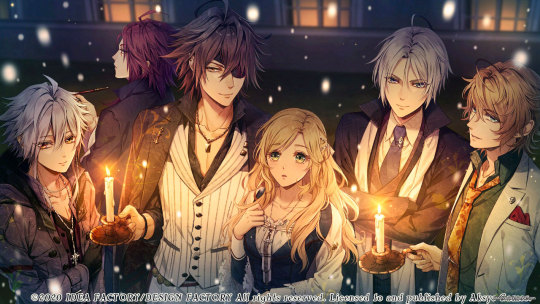
10 notes
·
View notes
Text
CHRONOLOGY OF AMERICAN RACE RIOTS AND RACIAL VIOLENCE p.3
1911
National Urban League founded.
1914
Marcus Garvey establishes the Universal Negro Improvement Association (UNIA).
November William Monroe Trotter confronts Woodrow Wilson in the White House over the president’s support for segregation in federal offices.
1915
Debut of the D.W. Griffith film, The Birth of a Nation.
Failure of African American lawsuit against the U.S. Treasury Department for compensation for labor rendered under slavery.
CHRONOLOGY OF AMERICAN RACE RIOTS AND RACIAL VIOLENCE lvii
November William J. Simmons refounds the Ku Klux Klan at Stone Mountain in Georgia.
1916
Madison Grant publishes The Passing of the Great Race, detailing his drastic prescription—including eugenics—to save the white race from being overwhelmed by ‘‘darker races.’’
May Jesse Washington, a seventeen-year-old illiterate black farm hand, is lynched in Waco, Texas.
1917
May–July East St. Louis, Illinois, riots.
August Houston, Texas, mutiny of black soldiers at Camp Logan.
1918
After protesting the lynching of her husband, Mary Turner, then eight months pregnant, is herself brutally lynched in Valdosta, Georgia.
April Congressman Leonidas C. Dyer of Missouri introduces an anti-lynching bill into Congress (the Dyer Anti-Lynching Bill is defeated in 1922).
July Chester and Philadelphia, Pennsylvania, riots.
1919
NAACP publishes Thirty Years of Lynching in the United States: 1889–1918 by Martha Gruening and Helen Boardman.
May Charleston, South Carolina, riot.
Summer Known as ‘‘Red Summer’’ because of the great number of people killed in various race riots around the country.
July Longview, Texas, riot.
Publication of Claude McKay’s sonnet, ‘‘If We Must Die.’’
Chicago, Illinois, riot.
Washington, D.C., riot.
August Knoxville, Tennessee, riot.
September Omaha, Nebraska, riot.
September–
October
Elaine, Arkansas, riot.
1920
Founding of the Commission on Interracial Cooperation, a major interracial reform organization in the South.
1921
April Tulsa, Oklahoma, riot.
1922
Anti-Lynching Crusaders are formed to educate Americans about lynching and work for its elimination.
Chicago Commission on Race Relations issues its influential report on the 1919
Chicago riots.
lviii CHRONOLOGY OF AMERICAN RACE RIOTS AND RACIAL VIOLENCE
1923
January Rosewood, Florida, riot.
February U.S. Supreme Court decision in Moore v. Dempsey leads to eventual release of
twelve African Americans in Arkansas who were convicted in perfunctory mobdominated trials of killing five whites during the Elaine, Arkansas, riots of 1919.
1929
Publication of Walter White’s Rope and Faggot: A Biography of Judge Lynch.
1930
Nation of Islam (Black Muslims) is founded in Detroit, Michigan, by W.D. Fard.
Formation of the Association of Southern Women for the Prevention of Lynching, the first organization of white women opposed to lynching.
October Sainte Genevieve, Missouri, riot.
1931
Scottsboro Case occurs in Alabama; the case comprises a series of trials arising outof allegations that nine African American youths raped two white girls in Scottsboro,
Alabama.
1932
Supreme Court renders a decision in Powell v. Alabama, a case related to the Scottsboro, Alabama, incident of 1931.
1934
Elijah Muhammad assumes leadership of the Nation of Islam.
1935
March Harlem, New York, riot.
1936
First Lady Eleanor Roosevelt addresses the annual conventions of both the NAACP and National Urban League.
1939
Billie Holiday’s first performance of the anti-lynching song Strange Fruit occurs at Cafe´ Society, New York’s only integrated nightclub.
1941
Supreme Court decision in Mitchell v. United States spurs integration of first-class railway carriages.
1942
Congress of Racial Equality (CORE) is founded as the Committee of Racial Equality.
February Double V Campaign is launched to popularize the idea that blacks should fight for
freedom abroad to win freedom at home.
1943
May Mobile, Alabama, riot.
June Beaumont, Texas, riot.
June ‘‘Zoot Suit’’ riots in Los Angeles, California.
July Detroit, Michigan, riot.
August New York City (Harlem) riot.
1944
Publication of Karl Gunnar Myrdal’s An American Dilemma: The Negro Problem and Modern Democracy.
16 notes
·
View notes
Text

135 years ago, on March 12 (24), 1888, Viktor Eduardovich Kingisepp was born — a professional Bolshevik revolutionary of Russia and Estonia, and one of the main organizers of the banned Communist Party of Estonia.
In the revolutionary movement since 1905, member of the RSDLP(b) since 1906. From 1907–1914 he conducted party work in St. Petersburg, Tallinn; participated in the publication of the newspaper “Kiyr” (“Luch”) in 1913–1914, maintained contact with the Russian Bureau of the Central Committee of the RSDLP, with the Bolshevik faction of the 4th State Duma.
He was repressed several times. In 1914 he was arrested and exiled to Tver, then to Kazan. In 1916 — on the Caucasian front.
After the February bourgeois-democratic revolution he returned to Petrograd; from the beginning of June in Tallinn, one of the leaders of the Bolshevik organization of Estonia. From October 22 (November 4), 1917, deputy chairman of the Estland Regional Revolutionary Committee, organized the Red Guard. From October 26 (November 8), 1917, a member of the executive committee of the soviets of the Estonian region. From March 1918 he worked in Moscow in the Supreme Revolutionary Tribunal and in the Cheka; member of the special commission of inquiry on the case of the rebellion of the Left Socialist-Revolutionaries, investigator in the case of the Lockhart spy organization.
In March 1918, at the 4th All-Russian Congress of Soviets, he was elected a member of the All-Russian Central Executive Committee. From November 1918 he led the Communist Party of Estonia. At the 1st (1920) and 2nd (1921) congresses of the Communist Party of Estonia he was elected a member of the Central Committee and a member of the Politburo of the Central Committee, created underground printing houses, published the newspaper “Communist”.
On May 3, 1922, Kingisepp was arrested by the authorities of bourgeois Estonia. The Soviet embassy offered to exchange him for two arrested counter-revolutionaries. The Estonians refused, and literally on the same day, Kingisepp, after being tortured and staged a court-martial, was executed.
The shooting took place on a deserted coast. The last words of the Bolshevik sounded exactly as one would expect from a real communist: “Long live Soviet Estonia!”
17 notes
·
View notes
Text


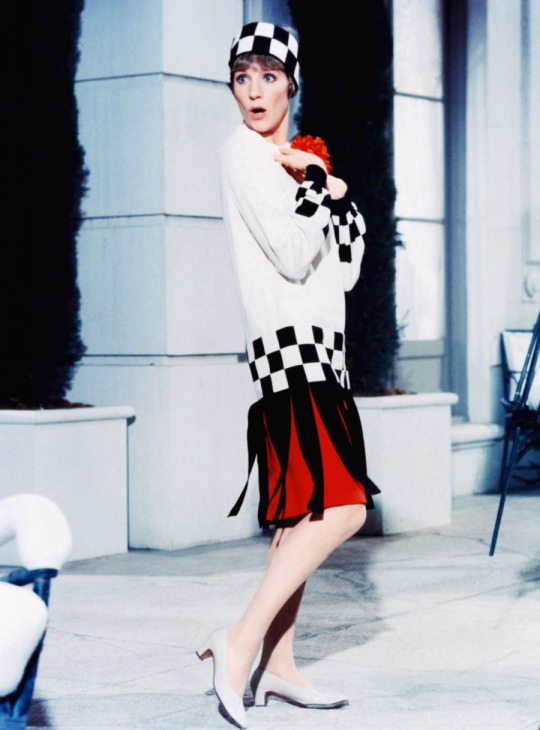


One Dress a Day Challenge
Black and White October
Thoroughly Modern Millie / Julie Andrews as Millie Dillmount
Julie Andrews wore several fun black-and-white dresses in this movie. @mygreatadventurehasbegun covered one of them earlier in the month, here. Millie wears this "checkerboard" outfit for the movie's climactic sequence, in which she accidentally sets off the contents of a firework factory.
It's more of an interpretation of 1920s fashion rather than something truly authentic, but it gets the point across! The flashes of red in the underskirt are a cute surprise, since you don't see them unless she's in motion.
I've been trying to tell whether the headpiece actually covers the top of her head or not. I think I might see a bit of hair peeking out over it in a couple of these pictures, but I'm not quite sure.
#thoroughly modern millie#black and white october#julie andrews#one dress a day challenge#one dress a week challenge#1960s does 1920s#1967 films#1967 movies#movie costumes#musical costumes#shouldn't the heels on the shoes be more concave?
42 notes
·
View notes
Text

Saint Pio of Pietrelcina
For over fifty years, Padre Pio of Pietrelcina reported stigmata which were studied by several 20th-century physicians, whose independence from the Church is not known.[26][27][28] The observations were reportedly inexplicable and the wounds never became infected.[26][27][29] His wounds healed once, but reappeared.[30] The wounds were examined by Luigi Romanelli, chief physician of the City Hospital of Barletta, for about one year. The physician Angelo Maria Merla noted that the wounds were not tubercular in origin but could not make an official diagnosis without further tests.[31] The surgeon Giorgio Festa, a private practitioner, also examined them in 1920 and 1925.[31] Professor Giuseppe Bastianelli, physician to Pope Benedict XV, examined the wounds, but no report of his examinations was made. Pathologist Amico Bignami of the University of Rome also observed the wounds, describing them as shallow. Festa, who had originally agreed with Bignami, later described the wounds as superficial when covered with a scab.[31] Giorgio Festa noted that "at the edges of the lesions, the skin is perfectly normal and does not show any sign of edema, of penetration, or of redness, even when examined with a good magnifying glass".[31] Alberto Caserta took X-rays of the hands in 1954 and found no abnormality in the bone structure.[31] Giuseppe Sala who worked as a physician for Pio between 1956 and 1968 commented that tests revealed his blood had no signs of abnormality.[31]
There were both religious and non-religious critics who accused Padre Pio of faking his stigmata, saying he used carbolic acid to make the wounds. The historian Sergio Luzzatto recounted that in 1919, according to one document in the Vatican's archive, Pio had requested carbolic acid from a pharmacist. She said it was for sterilizing syringes used for vaccination.[32]
Amico Bignami in a report wrote that the wounds were caused by "neurotic necrosis". He suggested they had been inflicted unconsciously by suggestion and artificially maintained by iodine that Pio had used as a disinfectant.[31] In 1922, physician Agostino Gemelli wrote that Pio was an hysteric and his stigmata were self-induced, not of supernatural origin.[33] Gemelli also speculated that his wounds were kept open with carbolic acid.[33] Giorgio Festa, who examined the stigmata of the friar on October 28, 1919, wrote in his report that they "are not the product of a trauma of external origin, nor are they due to the application of potently irritating chemicals".[34]
Throughout his life, Pio had hidden his wounds by wearing fingerless gloves. At death there were no wounds, only "unblemished skin".[35]
the drama of it all...
12 notes
·
View notes
Text
THIS DAY IN GAY HISTORY
based on: The White Crane Institute's 'Gay Wisdom', Gay Birthdays, Gay For Today, Famous GLBT, glbt-Gay Encylopedia, Today in Gay History, Wikipedia, and more …

976 – Cordoba, Spain: Hisham II becomes Caliph at age 11. He is the openly homosexual son of the openly homosexual Al-Hakam II. Both kept male harems.


1895 – Clifford Kitchin (d.1967) was a British novelist of the early twentieth century. He was best known for his four mystery novels featuring the sleuth Malcolm Warren (Death of My Aunt, Crime at Christmas, Death of His Uncle, and The Cornish Fox), but his other novels were also highly regarded, especially by other writers. His best known novels are The Auction Sale, Streamers Waving, and Mr. Balcony. He was one of Francis King's two mentors, the other being J. R. Ackerley. His other works include Book of Life and Jumping Joan.
Kitchin attended Exeter College Oxford and became a barrister. He was a gifted chess player, bridge player, and pianist. Kitchin led a varied and colourful life. He was born into wealth and increased his wealth through investment in the stock market. He used his wealth to take part in many different fields, including the breeding and racing of greyhounds, in which he was briefly an important figure.
He was actively homosexual and was living with his lover Clive Preen until Preen's death in 1944.


1920 – Born: Brooding and intense, Montgomery Clift (d.1966) was one of a group of young actors in the 1950s who personified the emotionally repressed loss of innocence of the post-World War II generation. A dedicated actor who exhausted himself both emotionally and physically with the depth of his characterizations, Clift was also an isolated and tortured, closeted gay man who used drugs and alcohol to escape his pain.
Although he was both friend and inspiration to the likes of Marlon Brando and James Dean, Clift felt his own acting achievements were undervalued, and he died as bitter and broken as the characters he played in many of his films.
Clift was born into privilege in Omaha, Nebraska on October 17, 1920, the son of a wealthy stockbroker. His father spent most of his time working in New York, leaving Clift, his twin sister Roberta, and his older brother Brooks in the care of their high-strung mother. An upper-class childhood filled with lengthy trips to Europe and the Bahamas ended suddenly with the stock market crash of 1929, and the family moved to a small house in Sarasota, Florida. There Clift discovered the theater in a local teen acting club.
Clift's mother encouraged her son's acting ambitions, and when the family moved back to New York in 1935, he auditioned and was cast in a Broadway production, Fly Away Home. His 1938 performance in the lead in Dame Nature established Clift's acting career. He was seventeen years old.
Clift's success on Broadway continued, and he soon found himself courted by Hollywood film executives. He rejected a number of scripts before finally making a memorable film debut in Howard Hawks' 1948 film Red River opposite John Wayne. Repotedly, both Wayne and Walter Brennan were offended by Clift's homosexuality, and stayed away from him while filming Red River. For his part, Clift was offended by the pro-USA political beliefs of those two older actors.
He followed that with a critical success in Fred Zinneman's The Search (1948), which earned him the first of four academy award nominations. Clift continued to make successful films and developed friendships in Hollywood, the closest of which was with actress Elizabeth Taylor. Taylor and Clift were both passionate and vulnerable people who felt a bond immediately. They worked together on several films, beginning with George Stevens' A Place in the Sun in 1951, and remained friends until the end of his life.
Clift had always had relationships with men, but he dated Taylor and other women to conceal his homosexuality. In the early 1950s, he turned down a role in Alfred Hitchcock's Rope, based on the infamous Leopold and Loeb gay murder case, probably because it might have led to speculation about Clift's own life.
Though at the beginning of his career, he drank only moderately and conducted his private life discreetly, by the mid 1950s he was using alcohol and drugs excessively and spending wild nights cruising. In 1954, Clift rented a house in the gay resort of Ogunquit, Maine, and spent the summer picking up men on the beach for S&M parties. The studios did their best to keep Clift's exploits out of the press, but rumors about his lifestyle abounded.
On May 12, 1956, after leaving a party at Taylor's, Clift drove his car into a telephone pole. The crash caused scarring and partial paralysis of his face, which would affect his appearance for the rest of his life. Although he continued to act, and gave some of his most memorable performances after the accident (in, for example, Stanley Kramer's Judgment at Nuremberg and John Huston's The Misfits in 1961), both his expressive acting and his personal life were never the same. His post-accident career has been referred to as the 'longest suicide in Hollywood' because of his continued substance abuse.
In his final years, Clift plunged more deeply into drug and alcohol abuse and wild sexual behavior. He began to be considered unreliable by studio bosses. Sadly, by the time his companion Lorenzo James found him dead of a heart attack at their home, on July 23, 1966, he was virtually unemployable.


1933 – On this date the Singing Nun was born (d.1985). Sœur Sourire a.k.a. Sister Smile was a Belgian nun, who had a world hit in and around 1963 with 'Dominique'. Her real name was Jeanine Decker and her name in the convent was Sister Luc-Gabrielle. She was born in Waver. In 1966 a film was released based on her life, under the title of 'The Singing Nun', with Debbie Reynolds in the title role.
Deckers became increasingly critical of Catholic doctrines and eventually became a public advocate for contraception. She also agreed with John Lennon's statements about Jesus in 1966. In 1967, she recorded a song entitled "Glory Be to God for the Golden Pill" — a paean to artificial birth control — under the name Luc Dominique. It was a commercial failure.
Her musical career over, Deckers opened a school for autistic children in Belgium. In the late 1970s, the Belgian government claimed she owed approximately $63,000 USD in back taxes. Deckers countered that the royalties from her recording were given to the convent and therefore she was not liable for payment of any personal income taxes. Lacking any receipts to prove her donations to the convent and her religious order, Deckers ran into heavy financial problems. In 1982, she tried, once again as Sœur Sourire, to score a hit with a disco synthesizer version of "Dominique", but this last attempt to resume her singing career failed.
Citing their financial difficulties in a note, she and her companion of ten years, Annie Pécher, both committed suicide by an overdose of barbiturates and alcohol in March 1985. She was 51.


London Mardi Gras, the precurser to Pride,
which Barry Jackson helped to organize in 1999
1946 – Barry Jackson, British gay activist and corporate and public affairs manager was born on this date (d.1999).
Born in south London, Barry read mathematics at the University of Sussex from 1966-69. There he was active in the student union, quickly learning to defuse arguments, and in student journalism.
In 1975, he went to work for North West Arts in Manchester, and then became development director of the Arts Council of Great Britain. He joined the University of Westminster in this role in 1990, before moving to the committee of vice-chancellors and principals as director of corporate affairs. There he ran campaigns to increase public funding for university research, to stop planned cuts in other areas of funding and to enhance recognition of the contribution universities make to regional and international competitiveness.
In 1994 he joined the board of the Actors Touring Company, and toured Greece when it presented simultaneous productions of Euripides's Ion in English and Greek.
While in Manchester, Barry became involved with the Campaign for Homosexual Equality, the first of a number of lesbian and gay groups which would benefit from his campaigning, communications and fundraising skills. His understanding and good humour in the often difficult circumstances created by prejudice and intolerance were later evident in his work at London Lesbian and Gay Switchboard. Between 1980-98, Barry spoke to many thousands of lesbians and gay men, their families and friends who had phoned, often in fear and confusion.
He also helped organise the first national conference on Aids in 1983, encouraged and supported the development of the Terrence Higgins Trust, and went on to be involved in a number of Aids organisations.Most of this he did with his closest friend, Mike Rhodes, who died suddenly in 1991. Barry helped set up the Mike Rhodes Trust, which makes an annual award to an individual who has "contributed most to promoting understanding of lesbian and gay life".
Shortly before his death from leukaemia aged 53, he was centrally involved in the staging of 1999's London Mardi Gras. The lesbian and gay festival brought together many strands in his life: activism with business acumen, politics with fun and style, an arts programme with a cutting edge and London with Sydney, two cities he loved.


1535 – Rome: Pope Paul III wrote a letter to his son Duke Pier Luigi Farnese on this day and scolded him for having male lovers with him on an official mission to the court of the Emperor. Born in Rome, Pier Luigi was the illegitimate son of Cardinal Alessandro Farnese who later became Pope Paul III.

1995 – For the first time in its history, the United Nations considers lesbian and gay rights abuses at its International Tribunal on Human Rights Violations Against Sexual Minorities. Following testimony from a number of women and men who have suffered abuse ranging from torture to forced institutionalization, the tribunal recommends that the UN document sexual orientation and gender identity issues around the world and integrate them into the organization’s human rights agenda.

2003 – On this date Hijra eunuchs in the Indian state of Madhya Pradesh float the political party Jiti Jitayi. In the culture of the Indian subcontinent a hijra (also known by a number of different names and romanized spellings) is usually considered a member of "the third sex" — neither man nor woman. Most are physically male or intersex, but some are female. Hijras usually refer to themselves as female at the language level, and usually dress as women.
Census data does not exist, but estimates range from 50,000 to 5,000,000 in India alone. Although they are usually referred to in English as "eunuchs", relatively few have any genital modifications. A third gender has existed in the subcontinent from the earliest records, and was clearly acknowledged in Vedic culture, throughout the history of Hinduism, as well as in the royal courts of Islamic rulers.


3 notes
·
View notes
Text
The look of... II: Tokyo-Akasaka
Historical Context
The history of Akasaka as a Hanamachi starts in 1869, when it was established with 20 Geisha in three Okiya. In 1883, it was ranked as 24th lowest of 25 Hanamachi in Tokyo. During the Russo-Japanese war (1904/05), Akasaka's wealth grew: by 1906, there were 65 Okiya, the most famous ones being Harumoto 春本 and Hayashi-ya 林家, both with more than 12 Geisha each. The legacy of Harumoto lives on with present-day Okiya like Kazuharumoto 一春本 and Hisamomoharumoto 久桃春本. The number of Geisha and Hangyoku living there reached its peak in the late 1920's (1928: 425). In 1986 the last Akasaka Hangyoku of the 20th century debuted. In 2014, Sakura was the first of currently three Hangyoku of a new generation. In 2022, 21 Geisha work in Akasaka.

The look of Akasaka Hangyoku
※ Hairstyle: Momoware, created with the Hangyoku's own hair, but Katsura is also possible!
※ Kanzashi: seasonal Hanakanzashi (Daikan+Katsuyama, often with Shidare), red Kanoko, Hirauchi, Kanokodome, one Bira-Ogi
※ Makeup: Oshiroi, both lips painted red from the start
※ Eri: red with white embroidery, sometimes with additional pink/gold details
※ Kimono: Chû-Furisode with shoulder tucks. Sleeve tucks are optional
※ Obiage: red with silver embroidery, flat on top of the Obi
※ Obi: Jidai Kôken Musubi
※ Obijime: flat with Obidome
※ Footwear: Zôri and Okobo




The look of Akasaka Geisha
※ Hairstyle: Taka Shimada or Tsubushi Shimada Katsura
※ Kanzashi: Kushi, Hirauchi, sometimes Maezashi, more often Ichidome in the front (common types are Mochidashi Kanzashi and Kotoji Kanzashi)
※ Makeup: Oshiroi
※ Eri: white
※ Kimono: Hômongi at debut, otherwise Hikizuri
※ Obiage: red, pink
※ Obi: Taiko Musubi with everyday wear, Yanagi Musubi with Kuromontsuki.
※ Footwear: Zôri
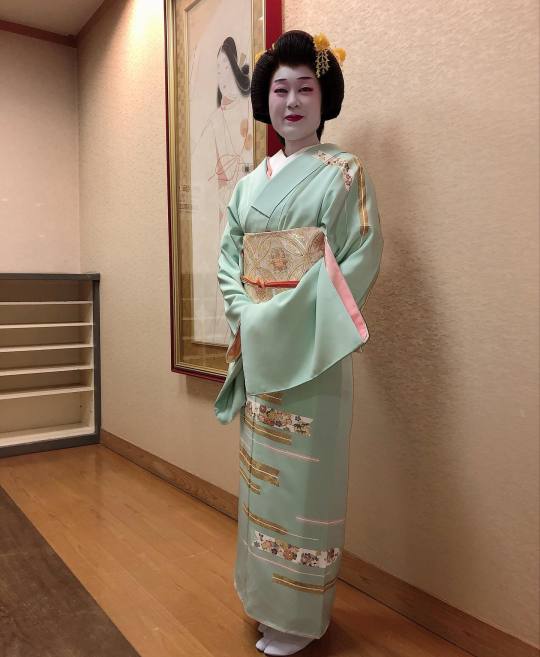
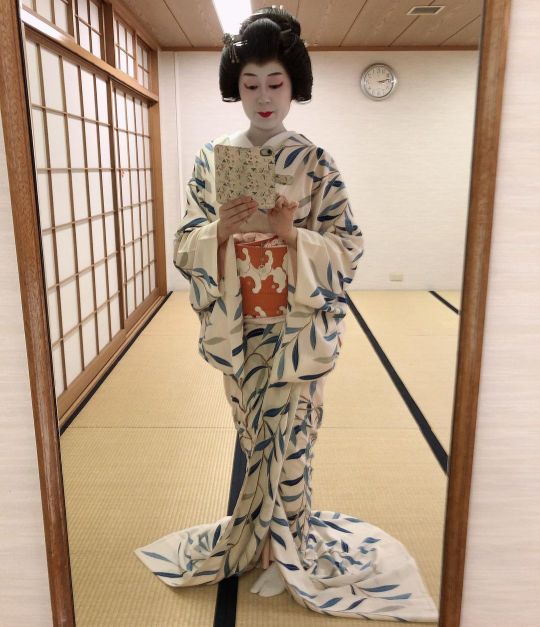
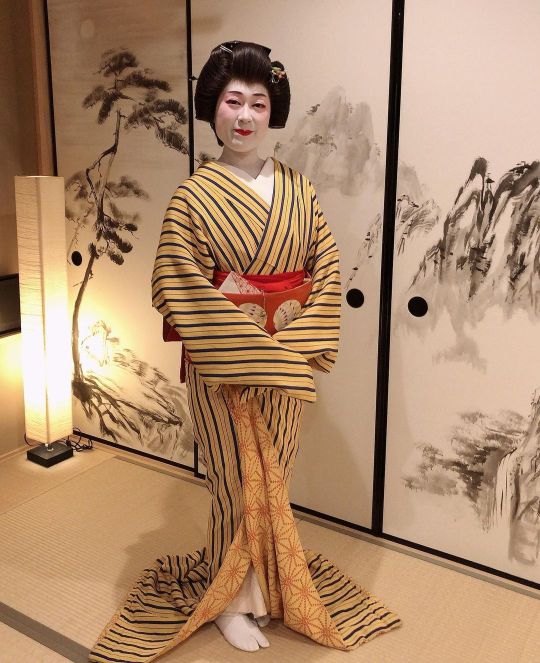
Notes
Hangyoku are a rare thing in Akasaka. The first Hangyoku to debut since 1986 was Sakura (さくら) in 2014. I could find only one picture of her online of when she still was a Minarai. After her came Koume (小梅), who was active for three years (2016-18), but there aren't a lot of pictures of her online. Mameka (まめ夏), who debuted in 2018 and became a Geisha in 2021, graced us with her own instagram account, posting many pictures of her outfits, so she is basically my only source for "the look of Akasaka Hangyoku". Kikumaru is my only source for the way a Geisha is outfitted at debut.
When Mameka debuted in October 2018, she wore a wig and continued to do so until February 2019. It also seems there isn't a uniform tradition revolving around Hangyoku debuts in this district. Koume wore Kofurisode, minimal hair decoration and had only her lower lip painted red. Mameka wore Chû-Furisode, normal hair decoration (as described above in "Kanzashi") and had both lips painted red.
Regarding Kôken Musubi. It seems the difference between "normal" and "Jidai" Kôken Musubi are the folds in the middle of the upper edge
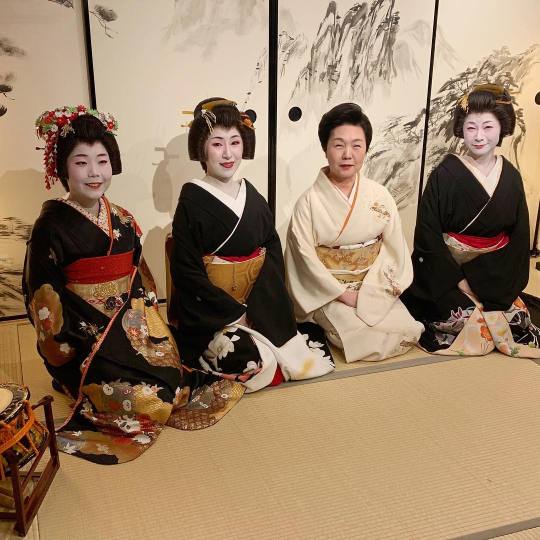

Sources
Kanzashi terms, Akasaka history, Minarai Sakura, "Jidai Kôken Musubi", Akasaka Odori 2011 poster, Mameka Debut 2018, New year 2019, Obi photo 2019, Kikumaru debut 2020, Kikumaru July 2020, Mameka November 2020, Kikumaru February 2021, Mameka February 2021, Mameka April 2021
Layout: @geimaiko (thanks as always!)
Original post from Jul 2022, last updated Jul 2023
52 notes
·
View notes
Text
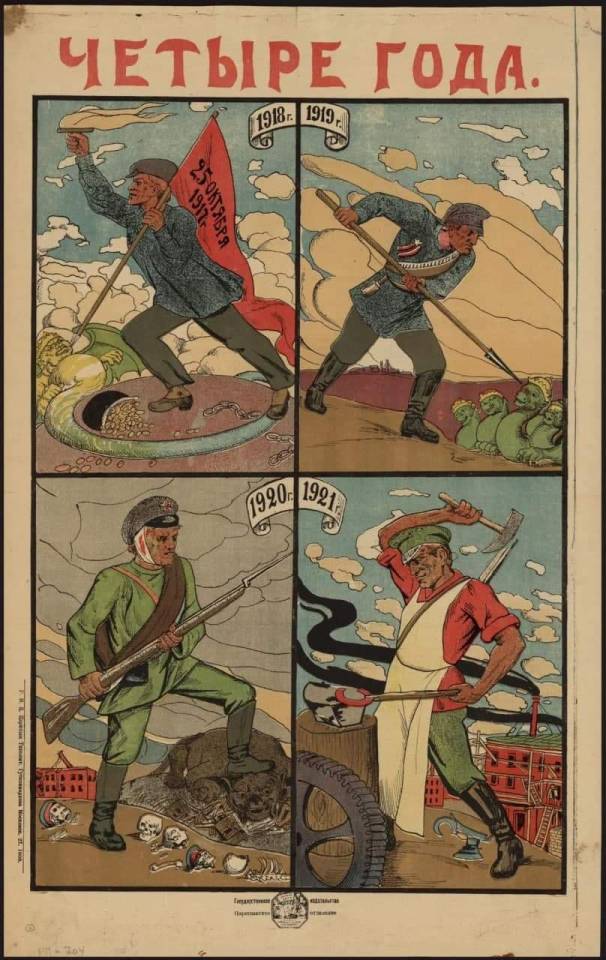
In the photo, a poster of an unknown author, released in Tsaritsyn (today Volgograd) for the fourth anniversary of October, is now exactly one hundred years old. In some ways, the poster resembles a hagiographic icon, however, without a central image.
In the first scene (1918), the proletarian stabs Mamona, stepping on her tail. In the second (1919), the Red Guard fights off a multi-headed serpent, which symbolizes the interventionists.
On the 3rd (1920), a Red Army soldier with a bandaged head crushes a beast, in the role of which the collective image of the White Army (Denikin, Wrangel, Kolchak). The last story (1921) shows the end of the Civil War & the transition to the restoration of the country's economy.
https://t.co/SOk525v4YA
20 notes
·
View notes